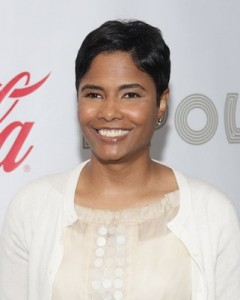Essence Editor Doesn’t Think Hiring a White Fashion Editor is Cause for Outrage
And we agree.
In case you’ve missed the controversy, here’s a quick recap. Essence is a magazine that’s targeted towards African-American women. They’ve been searching for a fashion editor since March. They recently chose Ellianna Placas, a white editor who had former positions at O: The Oprah Magazine and celebrity weekly US Weekly. Before being named to the position, Placas contributed to the magazine on a freelance basis.
In a statement responding to the controversy, Essence‘s editor-in-chief Angela Burt-Murray said
“I first got to know and came to respect Ellianna when she came to work with us nearly six months ago. We were conducting a search for a new director when she was hired to run the department on a freelance basis. I got to see firsthand her creativity, her vision, the positive reader response to her work, and her enthusiasm and respect for the audience and our brand. As such, I thought she’d make an excellent addition to our team. And I still do. This decision in no way diminishes my commitment to black women, our issues, our fights.” – {the Grio}

Angela Burt-Murray
On one hand, the discomfort among readers is understandable. Fashion can be a very non-diverse industry from the body types represented by the models, to the people who cast them, and the designers creating the clothes and the magazine staff who decide which designers are promoted to readers. With a handful of notable exceptions, Black, Asian and non-white Latino models aren’t as visible as white models. Crystal Renn is having her time in the sun at a size 10, but models above a size 4 are few and far between. While Tracy Reese went to the same school as Marc Jacobs, and has established a recognizable company, how many black designers can you name who’ve achieved similar visibility? Andre Leon Talley at Vogue, Robin Givhan at the Washington Post, Joe Zee at Elle, Nina Garcia at Marie Claire. Beyond those 4 names, trying to come up with a list of prominent non-white fashion editors at a major publication is a challenge.
Fashion has a real lack of diversity. There’s nothing wrong with celebrating skinny, white women as stylish and beautiful, but to champion skinny and white as the only kind of beauty is. So when a magazine like Essence, that started to celebrate the beauty and style of women with diverse body types and different skin tones (often ignored by other publications), offers a position to a woman who doesn’t have the same experience of opening a magazine and not seeing any faces similar to her own, naturally there will be questions.
Ultimately, the only one that really matters is if Placas will be able to connect with readers. According to Burt-Murray, she already has, and has done a great job at it.
While there are undoubtedly talented black candidates who could have been considered, one thing critics assumeis that black women’s style is a monolithic entity – and it’s not. Before Lady Gaga, black singers like Kelis (and Grace Jones before both) were wearing avant-grade, eye-catching clothes. While remarkable, their style wasn’t representative of the majority of black women in the same way that Lady Gaga’s style doesn’t represent the majority of white women. On a personal note, although I grew up in a household with subscriptions to Essence, I – a black woman (teen at the time), didn’t always find something I could connect with. Suede, a magazine from the same publishers, and one that I miss to this day, appealed to me far more. Placas may not understand being black, but when it comes to style, that doesn’t mean she can’t connect with a black audience. Specifically, the black audience that reads Essence.
For the talented black candidates who may understand being black, but may not have been able to connect with the Essence audience, we do hope that more publishers follow in Essence‘s footsteps and hire based on talent and ability to connect with an audience, rather than the perceived advantages of hiring a familiar face.
